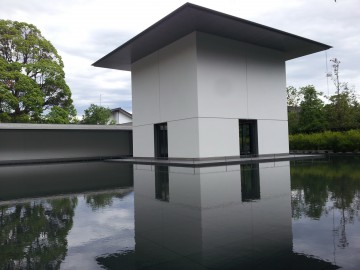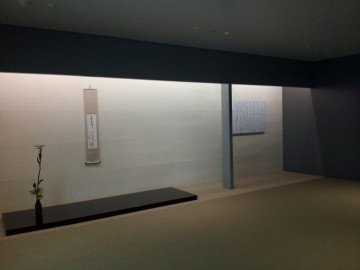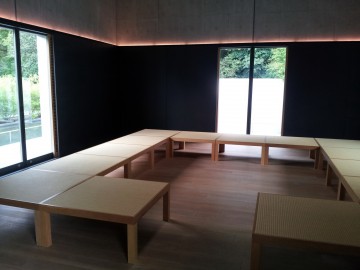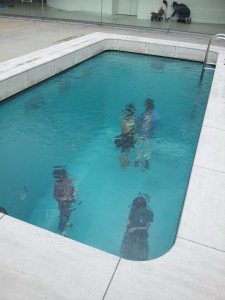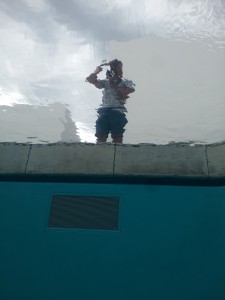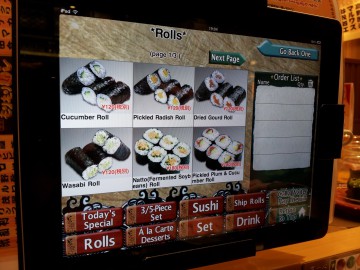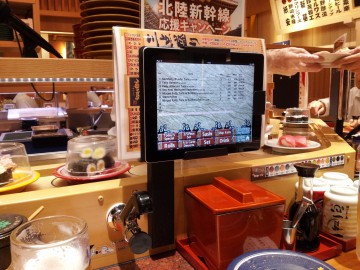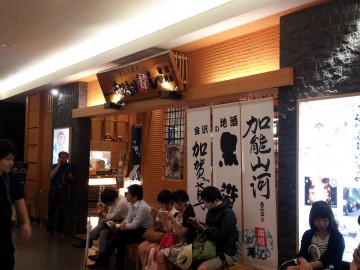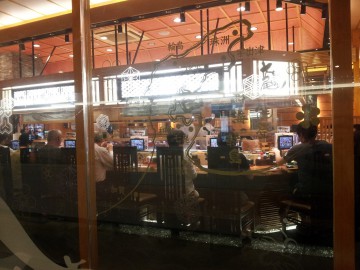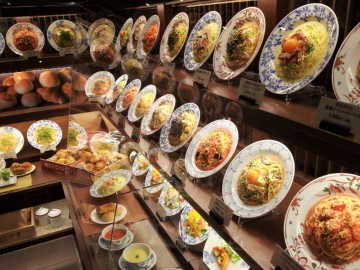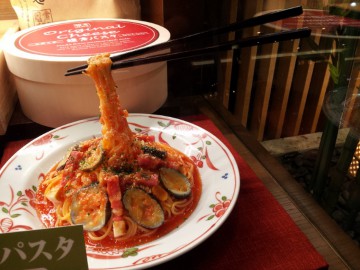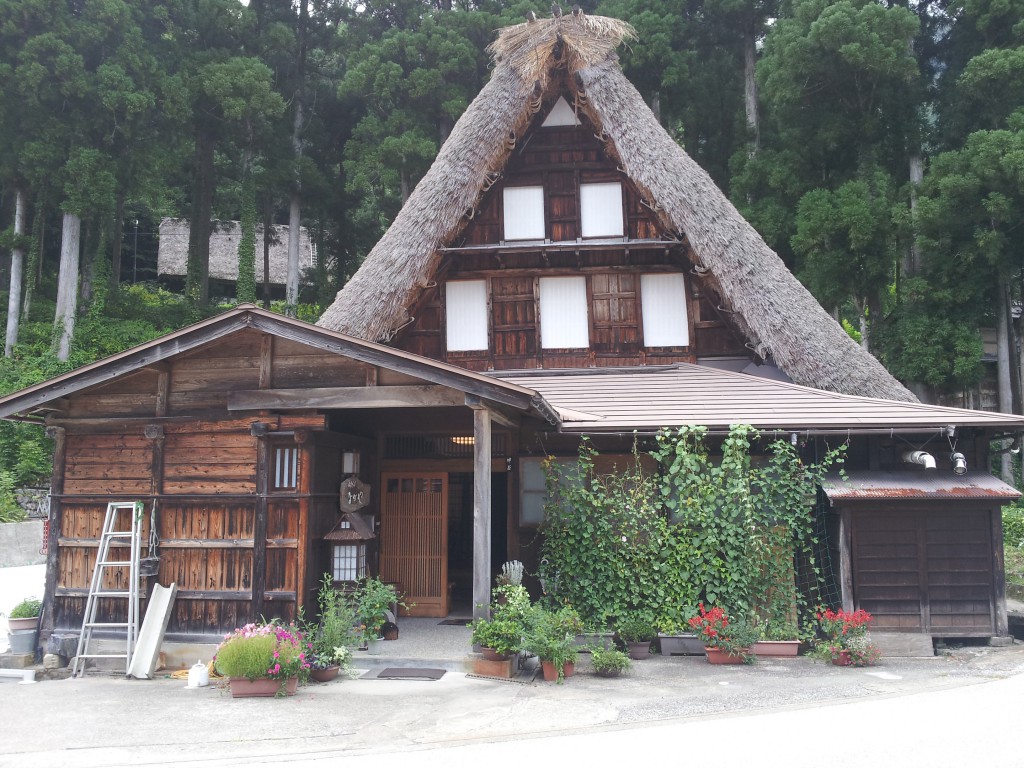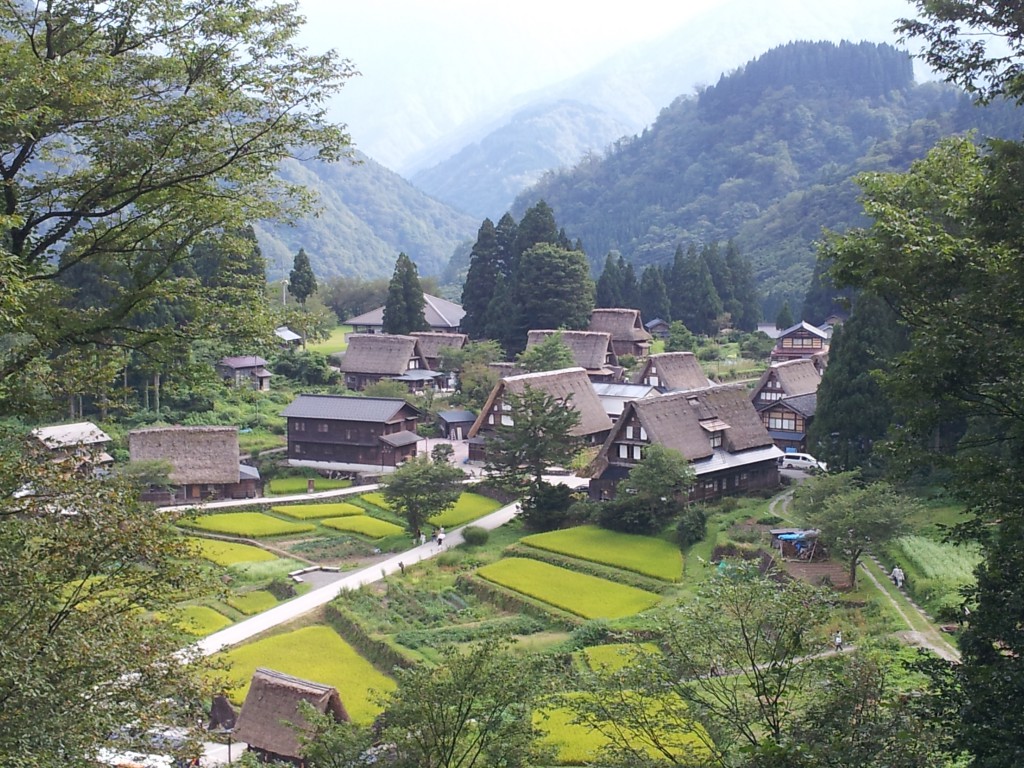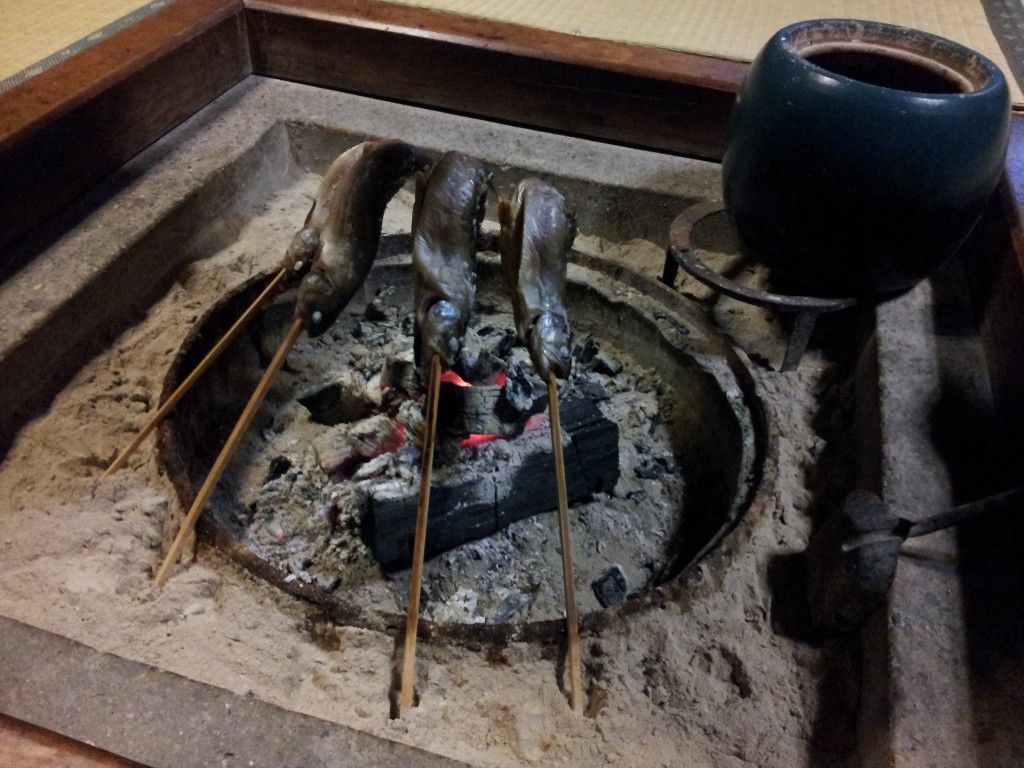The bus that passes by Ainokura at 7:52 is scheduled to be at Joanna station at 8:20. There is a JR train from Joanna station to Takaoka at 8:25. When I was planning for this trip, I didn’t know that virtually all trains and busses in Japan are on time, so I thought 5 minutes was not enough to get from the bus stop to the train. I therefore planned to continue using the same bus all the way to Takaoka, even though the journey was more than 1,5 hours.
When the bus arrived at Joanna station however, the bus driver seemed very surprised that we didn’t leave the bus. I assume we weren’t the first foreigners who took that bus and he did not understand why we would even consider to stay on the bus, if there was a faster train. So he was saying a lot of things to us in Japanese, none of which we understood. But when we asked “Takaoka”, he pointed at the train station and nodded and said “Hai! Hai!” (“Yes! Yes!”). So we jumped off the bus and into the station, which turned out to be very small, with only 2 tracks, and the train for Takaoka waiting on track 1.
Tip: if you take the first bus from Ainokura to Takaoka, you can safely assume that you have enough time to transfer at the Joanna station, thus saving on the bus fare (assuming you have a JR Pass).
The train departed at 8:25, but it wasn’t a speedy train at all: it stops in every station and travels 50 km/h at most. Yet, you get to Takaoka in less than an hour, which is still much faster than the bus.
Takaoka station is a lot bigger than Joanna. Our train to Kanazawa only left at 10:44, so we took the time to grab a coffee.
The Thunderbird train from Takaoka to Kanazawa goes pretty fast. Before we knew it, we arrived in Kanazawa (25 minutes).
The hotel check-in time was 2pm and as we knew by now, they don’t make any exceptions. So we left our luggage at the hotel and went to the bus station (in front of the train station).
Kanazawa has a very useful one-day bus pass that you can use on 3 busses that get you to most of the touristic places.
Tip: Buy a ONE DAY PASS at the bus ticket office (500 yen). It not only allows you to use the 3 main busses that go through the city, it also entitles you to a discount in a lot of places (indicated with a purple diamond on this map)
The bus system in the center of Kanazawa is very simple: you first decide which place you want to go to, then look for the closest bus stop and then take the right bus: the stops are indicated with letters and a number. The letter indicates the bus line (S for the Kenrokuen Shuttle, LL for the Kanazawa Left Loop Bus and RL for the Kanazawa Right Loop Bus). They run from approx. 8 am till 6pm. We had some difficulty in the beginning determining which bus was LL and which one RL (they both depart from bus stop #3), but the colors of the bus stops indicated on the map at the side of the bus can help: green for LL, orange for RL.
You only show you ONE DAY PASS at the driver when you get off. The bus stops are announced in Japanese and English, on a screen and verbally. What surprised me was that the bus driver always says when he or she will start driving (e.g. after stopping at a bus stop or for a red light) and even warns people that the bus will make a left or right turn. A bit overkill, if you ask me 🙂
We first went to the D.T. Suziki museum ∗∗∗ (![]() on Maps Kanazawa (pdf)). The building is designed by Yoshio Taniguchi (who also designed parts of MOMA (New York) and the Gallery of Horyuji (Tokyo). The architecture is stunning. It’s pure, elegant and superbly well made. The museum itself is dedicated to the Buddhist philosopher D.T. Suzuki, who is said to have introduced Zen to the Western world. The museum is very Zen as well, with just 3 rooms, a few objects, pictures and books and a design that gives you peace.
on Maps Kanazawa (pdf)). The building is designed by Yoshio Taniguchi (who also designed parts of MOMA (New York) and the Gallery of Horyuji (Tokyo). The architecture is stunning. It’s pure, elegant and superbly well made. The museum itself is dedicated to the Buddhist philosopher D.T. Suzuki, who is said to have introduced Zen to the Western world. The museum is very Zen as well, with just 3 rooms, a few objects, pictures and books and a design that gives you peace.
For lunch, we went to the Ishikawa Prefectural Museum of Art (![]() on Maps Kanazawa (pdf)). We did not go into the museum, but you can have lunch in the restaurant without the need for a ticket. The location is very nice (insert pictures) and the food excellent. Especially the sweets by master pastry chef and master chocolatier Hironobu Tsujiguchi are delicious. The café/restaurant is named after him: “Le musée de H”.
on Maps Kanazawa (pdf)). We did not go into the museum, but you can have lunch in the restaurant without the need for a ticket. The location is very nice (insert pictures) and the food excellent. Especially the sweets by master pastry chef and master chocolatier Hironobu Tsujiguchi are delicious. The café/restaurant is named after him: “Le musée de H”.
We then visited the 21st Century Museum of Contemporary Art ∗∗ (![]() on Maps Kanazawa (pdf)), designed by SANAA. Only half of the building was open (a new exhibition was being built), but the main attraction is “Swimming Pool”, Leandro Erlich.
on Maps Kanazawa (pdf)), designed by SANAA. Only half of the building was open (a new exhibition was being built), but the main attraction is “Swimming Pool”, Leandro Erlich.
If you are in Kanazawa, you have to eat sea food. So we looked for a good sushi restaurant and ended up in Morimorizushi Kanazawa-ekimaeten ∗∗∗, a kiten-zushi, restaurants where plates of sushi revolve on a conveyor belt. This one is special however, as each table has an iPad where you make your selection and the sushi is freshly made. It was definitely the best sushi I ever had. You’ll find the restaurant at the back of the 6th floor of the Kanazawa Forus shopping mall (next to the station).
When looking for the restaurant, we were amazed to see that quite a number of them are displaying all their dishes outside, made of some plastic that looks relatively authentic. It doesn’t look very tasty to me, but I assume it works for the Japanese.
